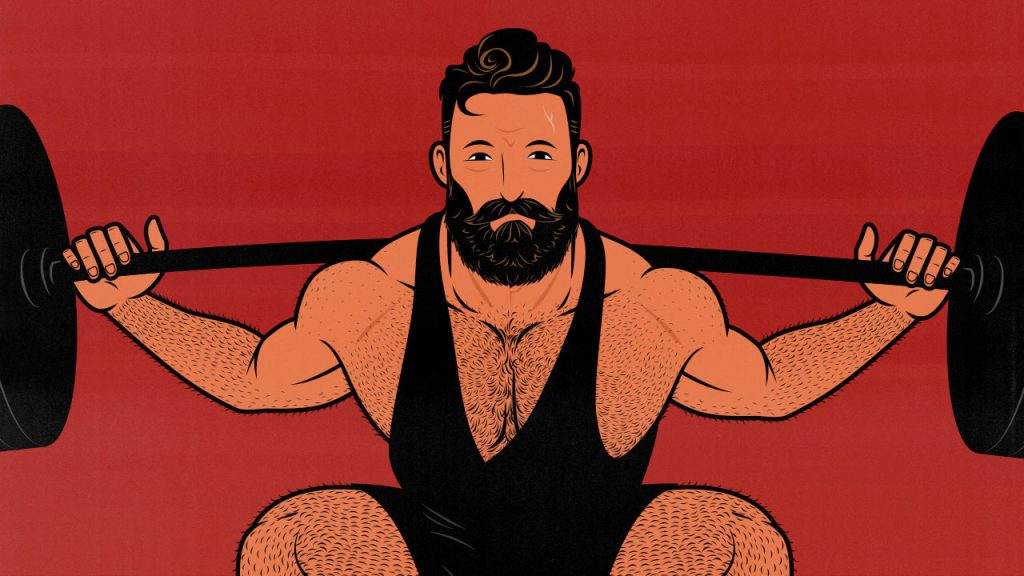
How to Optimize Your Stimulus-to-Fatigue Ratio (SFR)
The Stimulus-to-Fatigue Ratio (SFR) is a way to compare how much benefit a workout stimulates against how much fatigue it generates. The idea is to increase the stimulus while reducing the fatigue. For example, if you’re trying to build muscle, you could try to stimulate more muscle growth without generating as much fatigue.
At first, this can create the illusion that fatigue is bad and should be minimized, but it’s not quite that simple. Fatigue can also provoke adaptations, helping you grow bigger, stronger, and fitter. You don’t want to min-max away those benefits. Better to stimulate as much muscle growth as you can without generating too much fatigue.
Finally, you can improve your body’s ability to generate energy and recover from training. One of the best ways to reduce fatigue is to become not just bigger and stronger but also fitter.
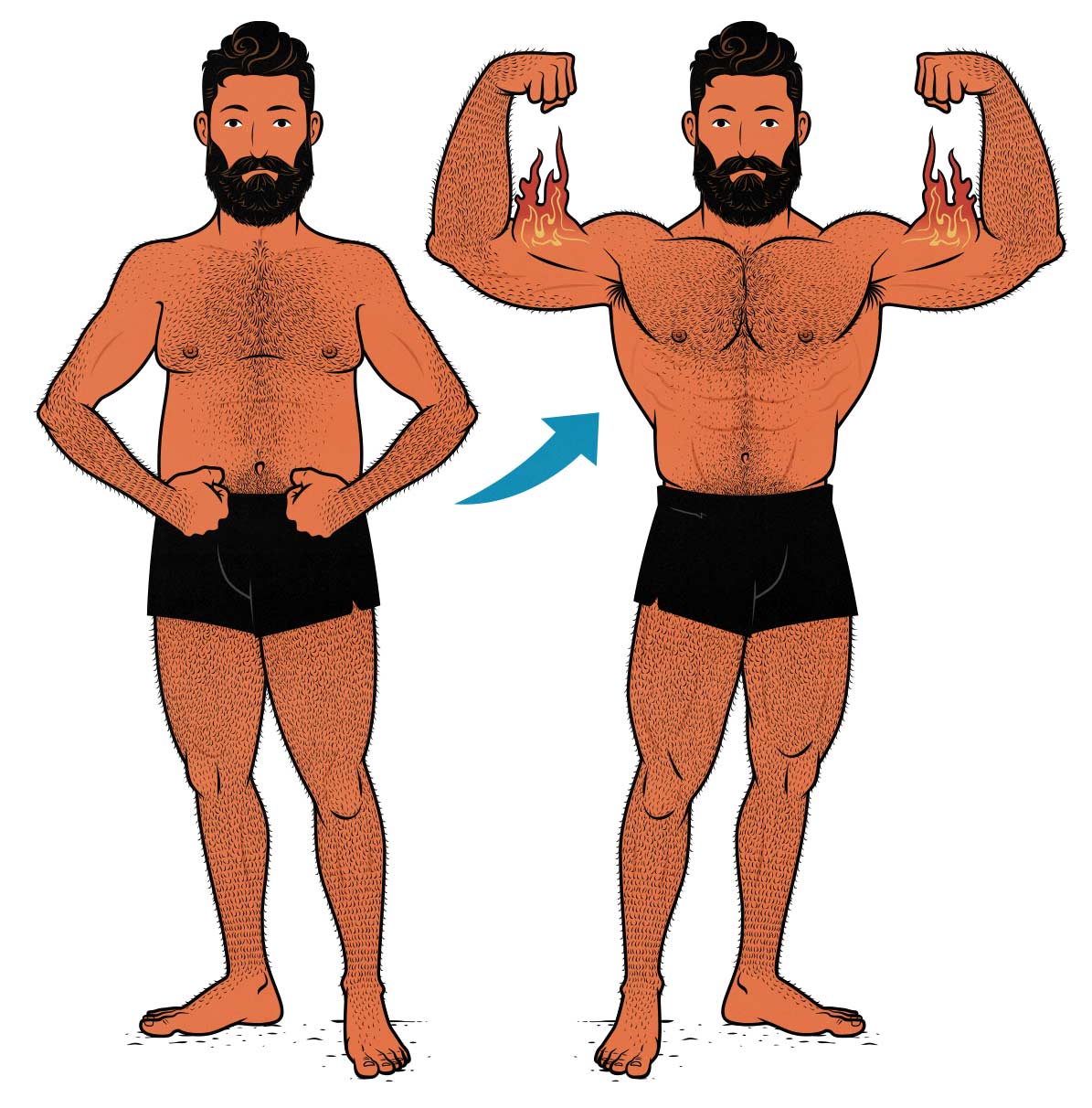
What Is Stimulus to Fatigue Ratio?
The stimulus-to-fatigue ratio (SFR) is a term coined by Dr. Mike Israetel from Renaissance Periodization. Just like it sounds, it compares the stimulus (which drives adaptations) to the fatigue costs of a workout routine.
- Stimulus: This is what provokes the adaptations we’re after, such as muscle growth, strength gains, or fitness improvements. This is why we train. This is what we want.
- Fatigue: This is the stress of the training session. It can manifest as muscle soreness, reductions in strength, or feelings of tiredness.
Where this gets tricky is that fatigue can be a kind of stimulus. It’s the stress of lifting weights that provokes muscle growth. It’s the stress on our cardiorespiratory systems that makes us fitter. Without that stress, there would be no growth. For example, a recent study found that indicators of fatigue were predictive of muscle and strength gains (study).
The stimulus-to-fatigue ratio is trying to tease apart the adaptations we want from the stresses we don’t need. For example, deadlifts can stress your spine, making it stronger and more robust. But maybe you don’t want that stress right now. Maybe you just want to build muscle. In that case, you could swap the deadlifts out for lighter sets of Romanian deadlifts. That’s great, sometimes.
Stimulus is Everything
Stimulus is absolutely crucial. Stimulating more muscle growth will allow you to build muscle faster, gain more strength, store less fat, and see better health improvements. That’s what hypertrophy training, strength training, and bodybuilding are all about.
You can dramatically improve your results by finding the best exercises and training in the most stimulative way:
You can take the same approach with cardio, finding the best methods for provoking positive fitness adaptations. I’m in the midst of writing a big cardio article. Hold tight.
Should You Care About Fatigue?
The benefits of reducing fatigue are more nebulous. Most people do too little exercise, stressing their bodies too seldomly. They go to bed festering with unspent units of physical fatigue. Even if they feel physically exhausted, that’s often because their lifestyle isn’t physical enough. Their vigour is withering away.
Serious lifters are in a somewhat different situation. Still, we can often handle and benefit from fairly large amounts of fatigue. After all, if you get into the habit of doing vigorous exercise, you’ll gain more vigour over time. Soon, you’ll find yourself brimming with energy.
On the other hand, maybe you find yourself crippled by muscle soreness, your energy crashes right when you need it most, or you want to stimulate more muscle growth before succumbing to exhaustion. That’s where the stimulus-to-fatigue ratio comes in.
Getting Fitter Reduces Fatigue
Your body can produce energy without oxygen (anaerobically) or with oxygen (aerobically).
- Anaerobic energy production gives us energy faster, but it runs out quickly, and it generates more fatigue.
- Aerobic energy production gives us energy more slowly, but it’s extremely sustainable, and it hardly generates any fatigue.
When we think of lifting weights, we often think of anaerobic energy production. That’s true when lifting a 1-rep max one time, but by the time you’re doing 5+ reps, at least a third of your energy is coming from your aerobic system. Plus, if you’re doing multiple sets, your anaerobic system runs out of energy, even if you’re resting for a few minutes between sets. By the time you’re on set 3 or 4, almost all of your energy is aerobic.
So, if you’re doing hypertrophy training, doing 6–20 reps for multiple sets, most of your energy comes from your aerobic system. And that’s great. That energy is more sustainable. It won’t generate nearly as much fatigue. Bodybuilders will often lean into those benefits, doing multiple sets of 10+ reps with short rest times.
If you can improve your cardiorespiratory fitness, you can get even more energy from your aerobic system, allowing you to get more reps, helping you recover faster between sets, and reducing the amount of fatigue you generate.
Getting fitter also strengthens your “rest and digest” (parasympathetic) system. When you’re resting, your heart will beat at a slower pace, your digestion will improve, and your body will be flooded with more of the hormones that help you adapt, grow, and recover.
The best way to get fitter is to do cardio. If you combine cardio with lifting properly, it should improve your muscle growth.
Getting Fitter Reduces Fatigue
Your body can produce energy without oxygen (anaerobically) or with oxygen (aerobically).
- Anaerobic energy production gives us energy faster, but it runs out quickly, and it generates more fatigue.
- Aerobic energy production gives us energy more slowly, but it’s extremely sustainable, and it hardly generates any fatigue.
When we think of lifting weights, we often think of anaerobic energy production. That’s true when lifting a 1-rep max one time, but by the time you’re doing 5+ reps, at least a third of your energy is coming from your aerobic system. Plus, if you’re doing multiple sets, your aerobic system does more work in those subsequent sets.
So, if you’re doing hypertrophy training, doing 6–20 reps for multiple sets, quite a lot of your energy comes from your aerobic system. And that’s great. That energy is more sustainable. It won’t generate nearly as much fatigue. That’s one of the reasons why bodybuilders lean into their aerobic systems, doing multiple sets of 10+ reps with short rest times.
If you can improve your cardiorespiratory fitness, you can get even more energy from your aerobic system, making your workouts less fatiguing, helping you recover faster between sets, and improving your recovery between workouts. The best way to get fitter is to do cardio. If you combine cardio with lifting properly, it should improve your muscle growth.
How to Improve Your SFR Ratio
Don’t Lift too Heavy
A few years ago, Brad Schoenfeld and colleagues conducted a famous study comparing strength training workouts against hypertrophy training workouts (study).
- The strength training group did 7 sets of 3 repetitions, with long rest periods between each set. Their workouts took a little over an hour to complete. Two of the participants quit halfway through the study because of injuries. Most of them complained about sore joints and fatigue.
- The hypertrophy training group did 3 sets of 10 repetitions, with shorter rest periods between sets. They finished their workouts in around 15 minutes and left the gym feeling fresh.
Both groups gained the same amount of muscle.
If you want to leave the gym surging with vitality, you could do a quick hypertrophy workout. If you want to invest more units of fatigue, you could train efficiently for longer, stimulating more muscle growth. Instead of leaving after 15 minutes, you could stay for a full 45–90 minutes. You’ll be tired, but your muscles will grow to terrifying proportions.
The benefit of training heavier is that you’ll gain more maximal strength. You’ll get better at lifting in lower rep ranges. You’ll be able to lift more weight for a single repetition. That’s everything to a powerlifter. I’m not sure how much it matters to you.
Don’t Lift Too Light
Schoenfeld has another famous study (study). He compared hypertrophy training against high-rep training, as you’d find in some callisthenics and resistance-band programs.
- The high-rep group did 25–35 reps per set. They found the training incredibly painful. Many of them threw up after finishing their sets. Most of them had trouble bringing their sets close enough to failure to maximize their rate of muscle growth.
- The moderate-rep group did 8–12 reps per set. They didn’t have any issues. The workouts were challenging, but they finished the program just fine.
Both groups gained the same amount of muscle.
Some people enter the Iron Temple with sins to atone for. Maybe high-rep sets of resistance-band squats allow you to burn the guilt away. I won’t stop you from training how you want to train. But it’s a needlessly painful way to stimulate muscle growth.
On the other hand, some exercises suit higher rep ranges just fine. Most people can tolerate a set of 30 push-ups. Sometimes, doing high-rep biceps curls or lateral raises can stimulate a new wave of muscle growth. There’s a time and place for lighter sets.
Use a Moderate Training Volume
High-Intensity Training (HIT) is trending right now. It’s a minimalist approach to lifting weights. You lift incredibly hard, do fewer sets, and train less often. However, training that hard is disproportionately fatiguing, and it isn’t all that stimulative. The workouts are short and infrequent, yes, but the stimulus-to-fatigue ratio isn’t very impressive.
The other approach is to pile your workouts high with volume. You’d do more total sets and exercises. Maybe you train 5 days or even 6 days per week. That can work. The stimulus is fully maximized. But it’s needlessly fatiguing. Most people can gain just as much muscle with a more moderate approach.
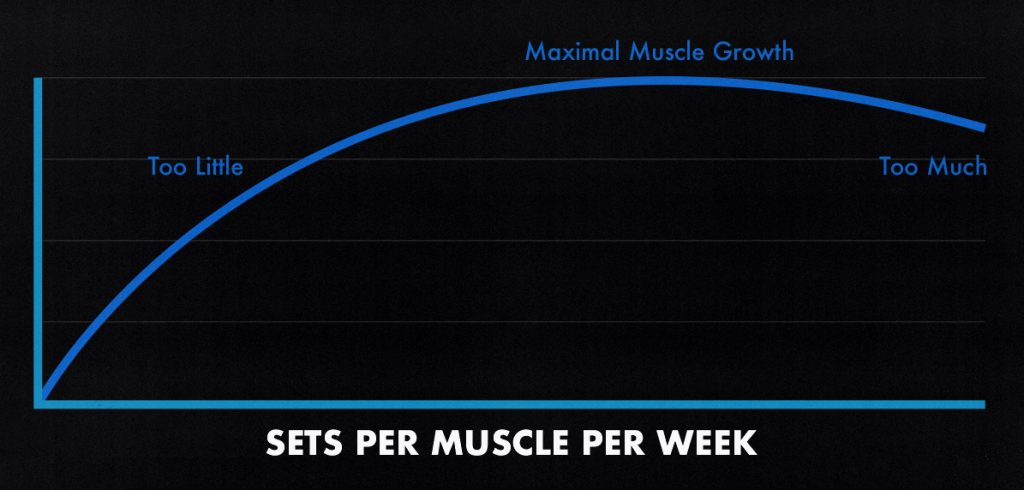
Doing more sets stimulates more muscle growth—to a point. You need to figure out where that point is. For most of us, it’s somewhere between 9–18 sets per muscle per week. If you train each muscle 2–3 times per week, you’re looking at 3–9 sets per muscle per workout.
There’s an enormous caveat here. You need to train properly. Otherwise, it will take you far more work to maximize your rate of muscle growth. You need to choose good exercises, give each repetition your best effort, do between 6–20 reps per set, and get almost enough rest between those sets.
Ramp Your Training Volume
There’s a phenomenon called the Repeated Bout Effect (RBE). When you first start lifting weights, your muscles are sensitive. It doesn’t take much to stimulate muscle growth. It’s also easy to go too far, leaving you trapped inside a tired and aching body.
But as time goes on, your muscles grow bigger, stronger, and tougher. And that toughness comes fast. Within a couple of weeks, you may be able to tolerate twice as much volume as you could before. Within a few months, the workouts that left you fatigued will leave you feeling energized.
The simplest way to account for RBE is to start with fewer sets and gradually add more from week to week. Maybe in the first week, you do 2–3 sets per exercise. Perhaps in the second week, you do 3–4. And perchance, there will come a time when you add extra workout days to your routine.
Use Dumbbells, Cables & Exercise Machines
If you notice that barbells are beating you up, you can swap out some of the more fatiguing exercises for dumbbell, cable, and exercise machine alternatives. For example, if barbell curls are beating up your elbows, try swapping them out for lying dumbbell curls. If barbell rows are beating up your spinal erectors, try swapping them out for dumbbell rows or seated cable rows.
Maybe Stop Shy of Failure
Most research shows that taking a set all the way to muscle failure stimulates slightly more muscle growth, especially with newer lifters (full explanation). There’s also a long tradition of advanced bodybuilders training quite hard to keep their muscles growing.
On the other hand, training to failure is also slightly harder to recover from. It’s unclear how this plays into the stimulus-to-fatigue ratio. It could be that training to failure gives you more extra growth than fatigue. It could also be that stopping 2 reps shy of failure but adding an extra set gives you the most growth per unit of fatigue.
What tends to work best is to mix both approaches together. You’d keep 1–3 reps in reserve on most of your sets, especially on heavier compound lifts. You’d also take some of your final sets all the way to the cusp of failure, especially on lighter isolation lifts.
Exercises With the Best SFR Ratio
Deadlifts => Romanian Deadlifts
Deadlifts are the disputed king of hypertrophy exercises. There’s no doubt they stimulate an awe-inspiring amount of muscle growth. There’s no better exercise for gaining strength. However, they’re also infamous for being fatiguing, leading some people to avoid them entirely.
If you have the fatigue points to spend, I highly recommend investing them in deadlifts, at least for a time, at least until you need that energy back. You can reduce their SFR ratio by doing 6–10 reps per set, lowering the weight slowly instead of dropping it, maintaining a strong spinal posture, and doing just 2–3 sets per week.
But if you want to save yourself the energy, Romanian deadlifts stimulate nearly as much overall muscle growth, they’re much easier on your spinal erectors, and they’re quite a bit better for your hamstrings, saving you from needing to do a separate hamstring exercise.
I love deadlifts. They’re my favourite exercise. Still, if I’m not actively bulking up, I’ll usually do Romanian deadlifts instead.
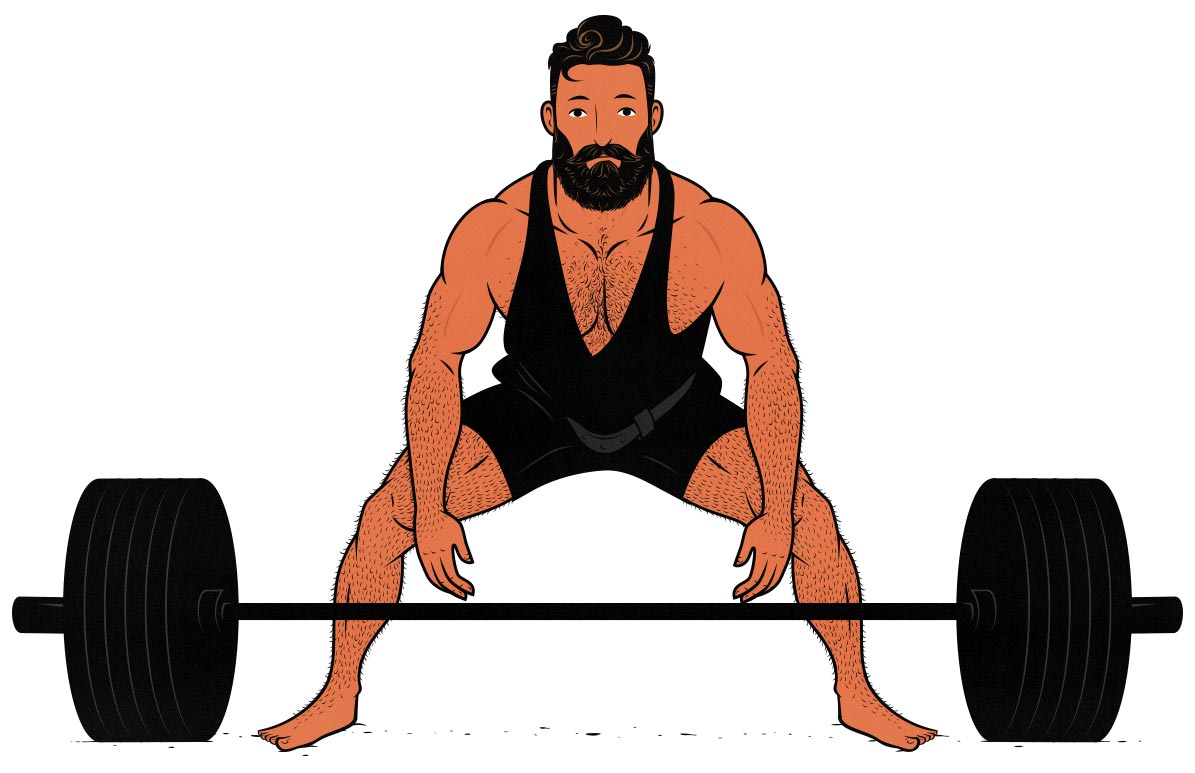
Overhead Press => Lateral Raises
The overhead press is the best exercise for bulking up your shoulders. It works your front delts incredibly hard, it trains your side delts quite well, and you’ll stimulate some growth in your traps, upper chest, triceps, serratus, and core.
However, like with the deadlift, the overhead press can be quite fatiguing, especially as you get stronger. If you want a smaller shoulder exercise that works your side delts similarly well, you can swap overhead presses for lateral raises.
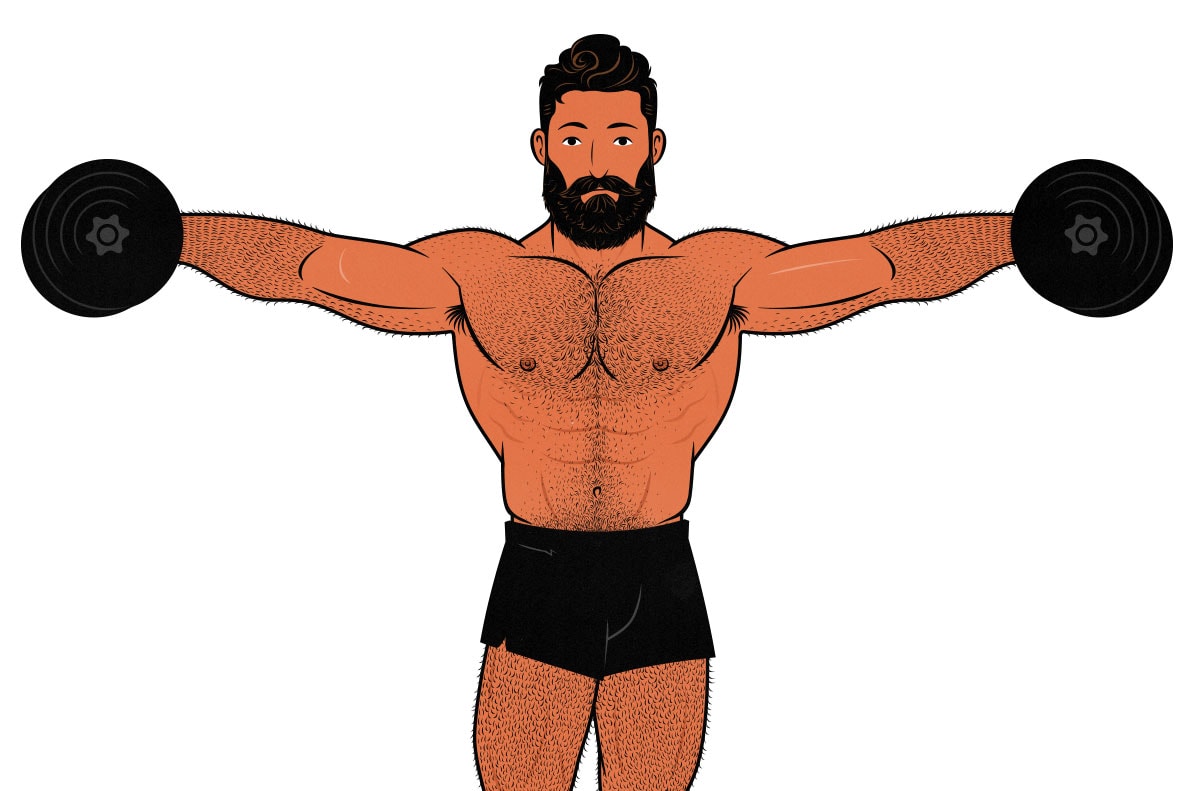
Bench Press => Dips
The bench press isn’t a particularly fatiguing exercise—at least not at first. As you get stronger, you’ll find yourself needing to brace harder, putting more tension into your arch. It’s common for strong bench pressers to wind up with a tired lower back and aching shoulders.
You could bench with less of an arch, switch to a dumbbell bench press, or do push-ups. All of those are great options. Perhaps the best option of all is to swap out the bench press for chest dips. Dips work your chest through a much deeper range of motion, stimulating more muscle growth per set (full explanation).
Start with bodyweight dips until you can do 10–15 deep reps with great form and sturdy shoulders. Add weight from there.
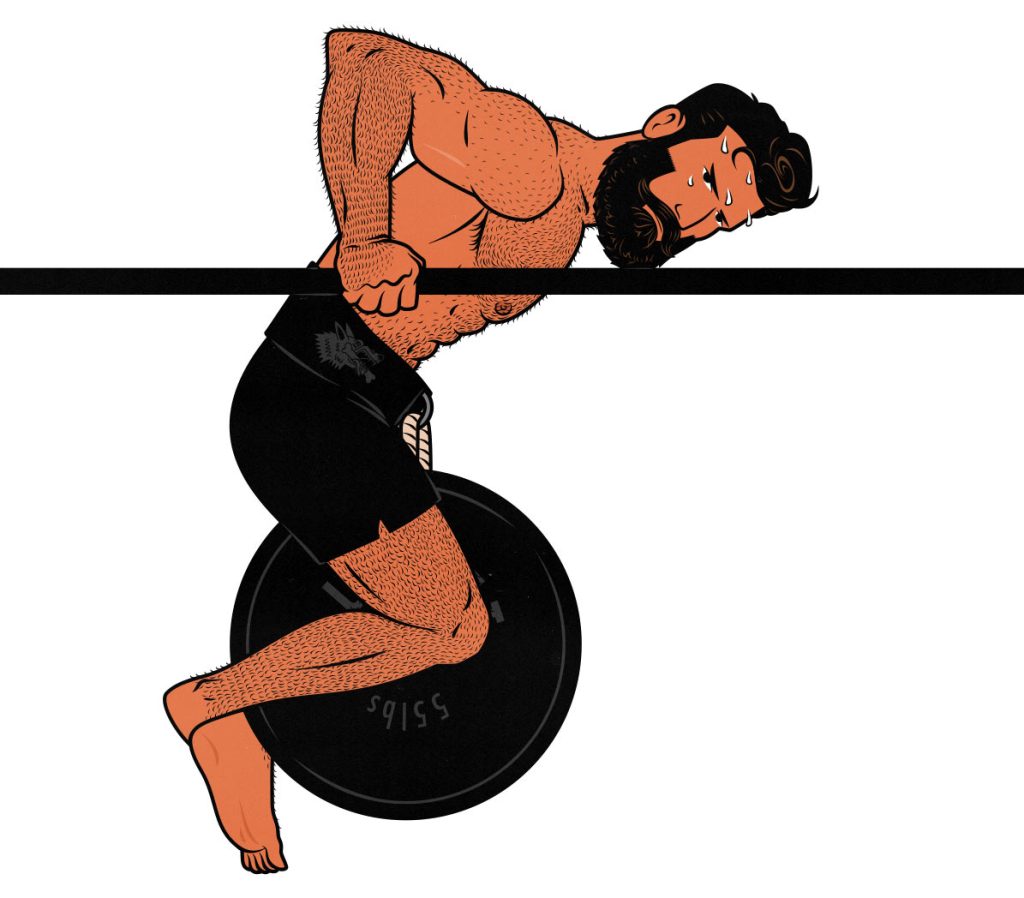
Squats => Leg Press or Hack Squat
Squats have a great stimulus-to-fatigue ratio. They offer an incredibly high stimulus while generating just a moderate amount of fatigue. That’s especially true if you’re squatting deep, as is common with goblet squats, front squats, and high-bar squats. You don’t need to swap them out.
Still, squats load your spine and work your spinal erectors. The leg press works your legs similarly hard without that extra burden. Same with the hack squat.
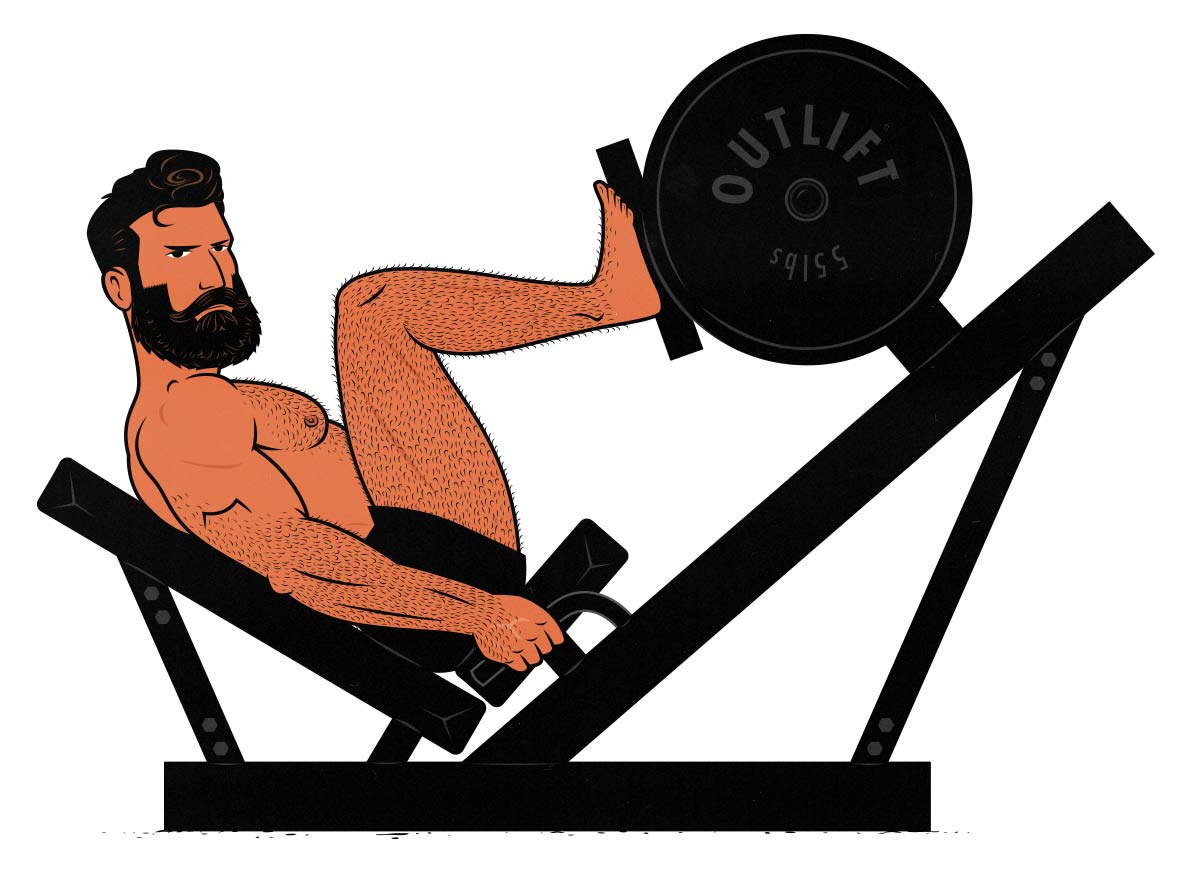
The SFR Ratio for Cardio
Some forms of cardio are more fatiguing than others. Swimming, ellipticals, and aerobics are all quite gentle. They can make for great options. But around here, many of us prefer going out on brisk walks.
Walking has a great SFR ratio. You can reap nearly all the rewards of cardio with a 30-minute walk every morning—until you grow too fit for it. At a certain point, walking won’t deliver enough stimulus to improve your fitness. You’ll need to go faster or heavier.
Jogging is fantastic for improving cardiovascular fitness, but it’s also quite fatiguing. The impact of all those footfalls is hard on your bones, even if you run with a gentler gait. That’s great for improving bone density and joint strength, but you already get those benefits from lifting weights, so you don’t necessarily need it from your cardio.
Rucking is nearly as vigorous as jogging, but the impact is substantially lower. You’ll need to load up a rucksack with weight, and that weight may tire out your traps, but even so, it’s fairly easy to recover from, especially if you’re only going out for 20–40 minutes at a time.

Conclusion
Improving the stimulus is usually more important than reducing the fatigue. It’s the stimulus that drives results, and fatigue is a sort of stimulus. If your workouts are highly stimulative and moderately fatiguing, that’s great. Suffering through moderately fatiguing workouts can improve your overall fitness and work capacity, giving you more vigour in the longer term.
Most people exercise too little, not too much. If you’re starting up a new program and it’s giving you great results but also leaving you feeling tired, that’s perfectly fine. It’s normal to want to lounge around and eat a big meal after lifting weights. It’s good to feel exhausted after going on a particularly long ruck.
There’s nothing wrong with leading a challenging life and going to bed feeling tired but satisfied. As Albert Camus so famously said, “One must imagine Sisyphus happy.” There is joy and purpose in the struggle.
However, if you’re reading this article, you might be struggling with excessive fatigue. And besides, even if your workout program is only moderately fatiguing, it’s perfectly reasonable to want to free up even more energy for other activities. It still pays to understand SFR.
Plus, if you train in a way that generates more stimulus and less fatigue, you can do more of it, getting better results.
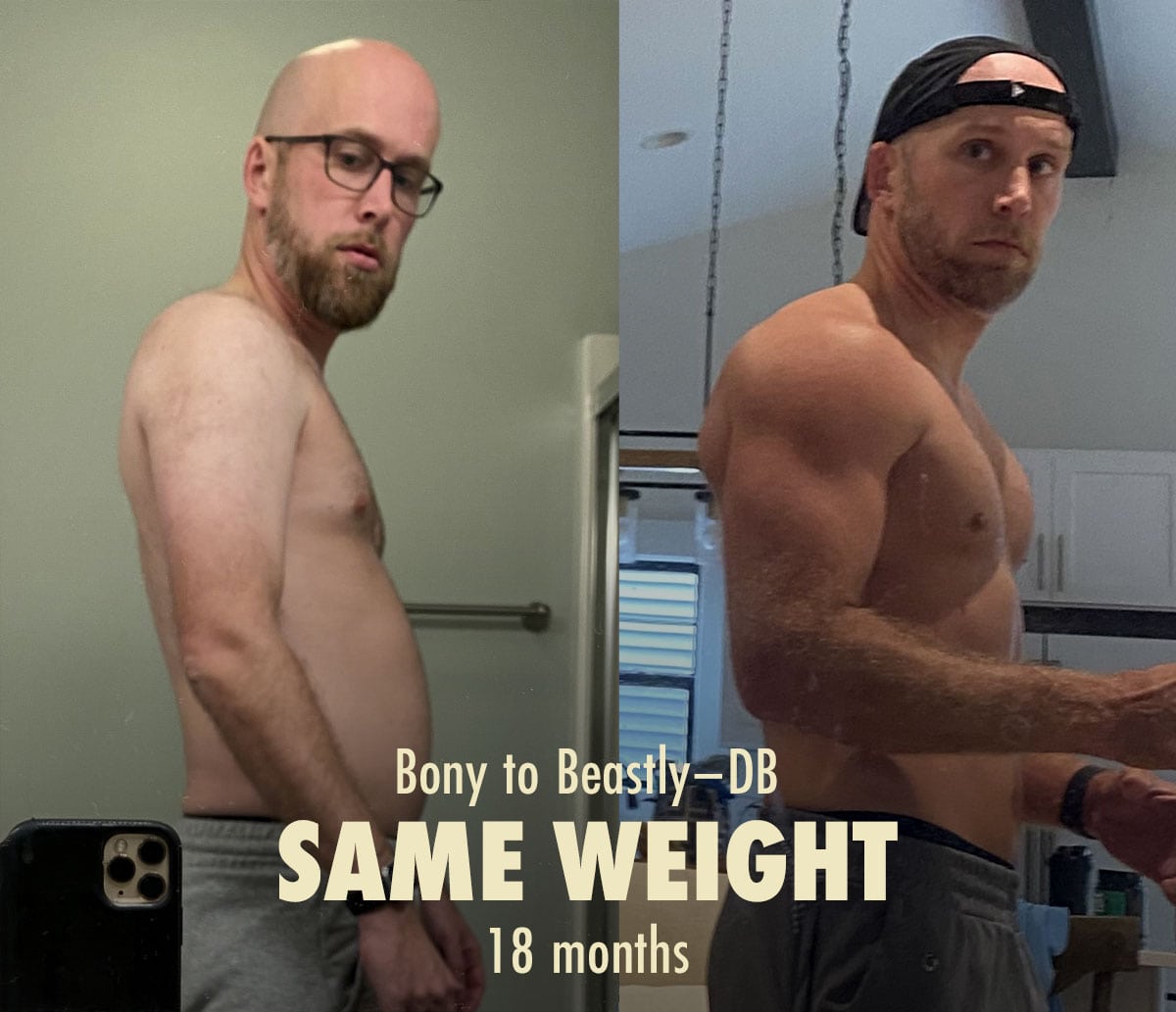
If you want a hypertrophy program that takes all of this into account, check out our Bony to Beastly Novice Program or our Outlift Intermediate Program.



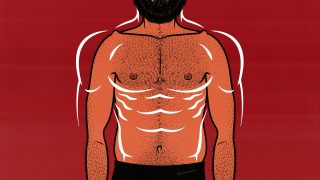
Very important subject you covered here. Especially with other obligations to juggle. Dr. Mike Israetel covered it in his Youtube channel a couple of times. Definetliy worth watching.
Thanks, Sebastian! I like Mike Israetel’s content. I’ve heard him talk about it a few times, but it’s been a little while now.
If I’m remembering it right, I think he’s coming at it from the perspective of a steroid dude who lifts weights almost every day while also being fairly serious about Brazilian Jiu Jitsu. I think he was doing like 2 workouts per day, right? I’m hoping you can correct me if I get this wrong, but was his approach to minimize fatigue, avoiding exercises like the overhead press? When you’re that big and muscular and you’re training that much, you need to get pretty drastic about reducing and managing fatigue.
If his body can benefit from 10 units of fatigue, and he generates 2 units of fatigue per hour of training (because his muscles are twice as big as a body is supposed to support), and he trains 20 hours per week, he’d bury himself. He needs to radically cut back.
If the regular guy benefits from 10 units of fatigue, and he generates 1 unit of fatigue per hour of training (because his muscles are of normal size), and he trains 6 hours per week, he could benefit from more. He might want more deadlifts and overhead presses and jogging. He might want to push closer to failure.
What do you think?
First of all, thank you for the elaborate reply. Your are absolutly right about Dr. Israetel. He is probally wider than tall, enhanced, and a freak of nature. I think some fatique management on different levels apply for us recreational natural lifters as well. But I agree I can not not imagine that overhead press could ever be a problem for me. (Doing sets of 8 with 105lbs ). But I personally do some swaps to manage fatique. I figured I need more volume to grow and added a fourth day (worked well). But since then I had to change some compound movements. Doing only chin-ups OR pull ups during the week. Not doing Deadlifts and RDL during the week. Swapped to RDL and good mornings. Minor changes with some impact.
My pleasure, man!
Yeah, I think that’s exactly right.
Mike Israetal was pressing 275 pounds for 8 reps or something wild like that, right? The fatigue from that must be immense.
Even with fairly normal programs, as a normal guy, with normal strength, I can feel pretty exhausted if I do too much too soon, or if I go too hard with my deadlifts, or even if I go too crazy with my step count. SFR is still worth considering, especially when trying to free up more energy for more volume, or when trying to put lifting/muscle/strength on the backburner.
Those sound like good changes you made, and it’s working 🙂
You made my day. Just had to watch said video with Mike Israetel. Insane.